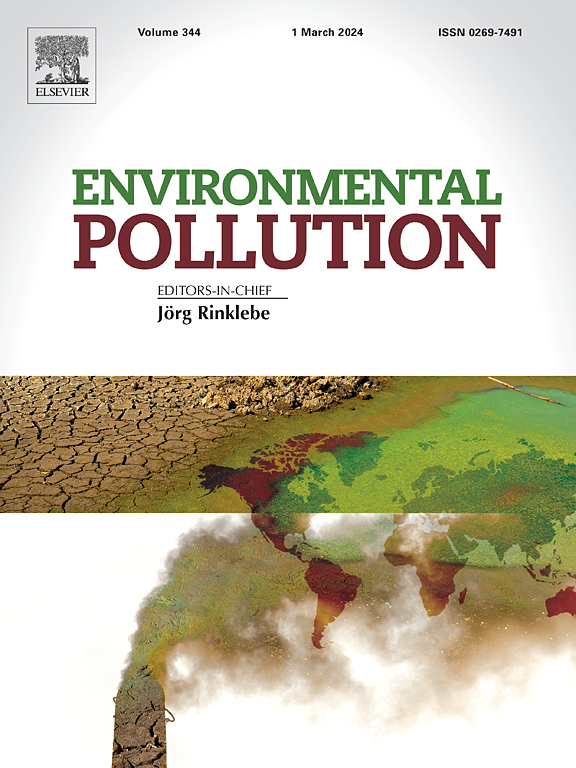Herbicide formulations impair in vitro performance of hazel pollen: natural is not safer.
IF 7.3
2区 环境科学与生态学
Q1 ENVIRONMENTAL SCIENCES
引用次数: 0
Abstract
The progamic phase from pollination to fertilisation is a critical stage of plant life cycle that is vulnerable to chemical exposure and requires controlled production of reactive oxygen species (ROS). Herbicide formulations are integral to agriculture, horticulture, and forestry, though surprisingly little is known about pollen exposure to commercial herbicide formulations, especially for non-target (i.e., non-weed) plants. Here, we compared the effects of a synthetic formulation of glyphosate (Roundup) and a natural formulation of pelargonic acid (Herbistop) on the in vitro performance of hazel (Corylus avellana L.) pollen. At equal pH values, Herbistop (half-maximal inhibitory concentration [IC50] 10.7-11.2 mg acid equivalents [a.e.] L-1) restricted pollen tube elongation at concentrations one order of magnitude lower than Roundup (IC50 332.0-410.0 mg a.e. L-1) and in a narrower range. Pollen staining with triphenyl tetrazolium chloride confirmed the toxicity of both formulations, with Herbistop compromising viability more severely. At respective IC50 values, both herbicide formulations curtailed the production of the ROS hydrogen peroxide during pollen tube elongation, impairing viability, and slowing down in vitro germination. Overall, our in vitro evidence shows that the natural formulation, Herbistop, was more hazardous for hazel pollen performance than the synthetic formulation, RoundUp. This highlights the common misconception that usage of natural herbicide formulations, rather than synthetic, is safer for non-target plants, other non-target organisms, and the environment. We propose that pollen performance is an additional toxicological endpoint of all herbicide formulations that requires special surveillance in gardens, woodlands, and agroecosystems.

除草剂配方损害了榛花粉的体外性能:天然的并不安全。
从授粉到受精的程序期是植物生命周期的关键阶段,易受化学物质的影响,需要控制活性氧(ROS)的产生。除草剂配方是农业、园艺和林业不可或缺的一部分,尽管令人惊讶的是,人们对商业除草剂配方的花粉暴露知之甚少,特别是对非目标(即非杂草)植物。在这里,我们比较了合成草甘膦(Roundup)和天然草甘膦酸(Herbistop)对榛(Corylus avellana L.)花粉体外性能的影响。在相同的pH值下,Herbistop(半最大抑制浓度[IC50] 10.7-11.2 mg酸当量[a.e。[L-1])抑制花粉管伸长,浓度比农达低1个数量级(IC50为332.0 ~ 410.0 mg a.e. L-1),范围更窄。用三苯四氮氯化铵染色证实了两种配方的毒性,Herbistop更严重地损害了生存能力。在各自的IC50值下,两种除草剂配方都减少了花粉管伸长期间活性氧过氧化氢的产生,损害了活力,减缓了离体萌发。总的来说,我们的体外证据表明,天然配方Herbistop比合成配方RoundUp对榛花粉性能的危害更大。这突出了一个普遍的误解,即使用天然除草剂配方,而不是合成除草剂配方,对非目标植物、其他非目标生物和环境更安全。我们提出花粉性能是所有除草剂配方的附加毒理学终点,需要在花园,林地和农业生态系统中进行特殊监测。
本文章由计算机程序翻译,如有差异,请以英文原文为准。
求助全文
约1分钟内获得全文
求助全文
来源期刊

Environmental Pollution
环境科学-环境科学
CiteScore
16.00
自引率
6.70%
发文量
2082
审稿时长
2.9 months
期刊介绍:
Environmental Pollution is an international peer-reviewed journal that publishes high-quality research papers and review articles covering all aspects of environmental pollution and its impacts on ecosystems and human health.
Subject areas include, but are not limited to:
• Sources and occurrences of pollutants that are clearly defined and measured in environmental compartments, food and food-related items, and human bodies;
• Interlinks between contaminant exposure and biological, ecological, and human health effects, including those of climate change;
• Contaminants of emerging concerns (including but not limited to antibiotic resistant microorganisms or genes, microplastics/nanoplastics, electronic wastes, light, and noise) and/or their biological, ecological, or human health effects;
• Laboratory and field studies on the remediation/mitigation of environmental pollution via new techniques and with clear links to biological, ecological, or human health effects;
• Modeling of pollution processes, patterns, or trends that is of clear environmental and/or human health interest;
• New techniques that measure and examine environmental occurrences, transport, behavior, and effects of pollutants within the environment or the laboratory, provided that they can be clearly used to address problems within regional or global environmental compartments.
 求助内容:
求助内容: 应助结果提醒方式:
应助结果提醒方式:


